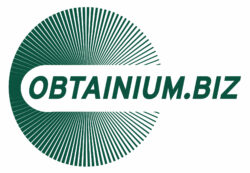Verra's Nature Framework: A Milestone for Biodiversity Conservation
As of October 29, 2024, Verra has launched the inaugural version of its Nature Framework, marking a significant advancement in biodiversity conservation efforts. Launched under the Sustainable Development Verified Impact Standard (SD VISta) Program, this framework aims to certify and incentivize projects that offer measurable positive outcomes for both nature and communities. The pioneering framework is a testament to Verra's dedication to aligning conservation efforts with sustainable development goals.
Purpose and Underlying Goals
At its core, the Nature Framework strives to generate measurable biodiversity benefits while supporting human well-being. By doing so, it seeks to incentivize investments in conservation projects. The framework is uniquely designed to assess and verify the positive impacts of investments in biodiversity, aiming for long-term environmental and social improvements. This approach underscores Verra's commitment to fostering projects that benefit both ecosystems and adjacent human populations.
Engaging Stakeholders and Community Inclusion
The development of the Nature Framework was marked by extensive stakeholder engagement, including a comprehensive public consultation from September to November 2023. This period was instrumental in integrating feedback from Indigenous Peoples, local communities, and pilot projects. Such inclusive consultation processes ensured that the framework reflects a broad spectrum of perspectives, fostering credibility and trust among its users.
The commitment to community inclusion is further reflected in the framework's commitment to creating equitable benefit-sharing mechanisms, ensuring that Indigenous communities actively participate in and benefit from conservation projects. This aspect is critical in building sustainable and respectful relationships with those most affected by biodiversity projects.
Framework Components and the Role of Credits
Central to the Nature Framework are the Nature Credits, which quantify biodiversity uplift due to project interventions. Each credit represents an equivalent of one quality hectare of biodiversity benefit. This innovative approach not only makes biodiversity benefits tangible and tradable but also sets a benchmark for other conservation projects globally. The framework also plans to introduce nature stewardship credits, aiming to further incentivize successful conservation management outcomes.
Tested through two-phased pilot projects involving 31 initiatives, the framework's clarity, scalability, and usability have been refined to meet the complex needs of biodiversity conservation. The robust testing phase exemplifies Verra's rigorous methodological development process, ensuring that the framework is both practical and impactful.
Aligning with Other Standards and Prospects for the Future
The Nature Framework is strategically aligned with existing environmental standards, such as the Verified Carbon Standard (VCS) program. This allows projects to stack carbon and nature credits, augmenting the appeal and effectiveness of conservation projects. Such integration facilitates holistic approaches to environmental restoration, aligning efforts with broader global initiatives like the International Advisory Panel on Biodiversity Credits (IAPB) and the Nature Positive Initiative Partnership (NPIP).
Looking ahead, Verra is committed to refining the framework based on continued feedback. The development of nature stewardship units planned for 2025 opens new avenues for partnerships and technical advancements. By fostering collaborative relationships and ongoing development, Verra aims to perpetuate the impact of its Nature Framework, ensuring that it remains an unparalleled tool for biodiversity conservation across diverse global landscapes.

